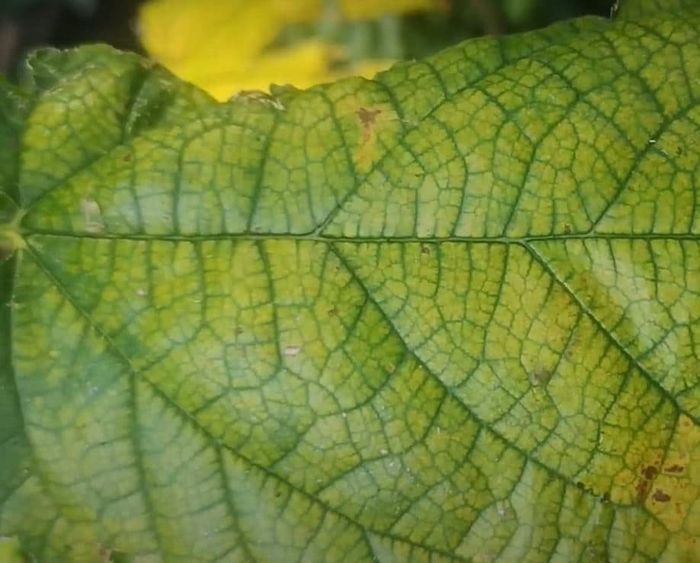There are numerous aspects that can cause leaves to yellow. Overwatering, under watering, sunlight exposure and nutrient availability are some of the main determinants of leaf colour.
Chlorophyl is a key light compound with an essential metal ion called magnesium. Chlorophyl is a vital compound in plants. It is the site of photosynthesis which allows plants to convert light energy into food energy in form of carbohydrates. Therefore, if any of the elements that go to the chlorophyl structure of production are deficient, chlorophyl production will decrease. The leaves will as well start to turn yellow. Nutrient deficiencies lead to various discolourations.
Nitrogen and magnesium deficiency
Magnesium deficiency can cause yellowing of leaves and leaf edges. Older leaves start to yellow first. Other signs include venial chlorosis which causes the areas between the veins to turn yellow.
Nitrogen uptake is influenced not only by its concentration in the growing medium but other indirect factors such as water availability and soil ph. Nitrogen is a mobile element from the plant- it relocates from older to newer ones during deficiency. Older leaves start showing signs of nitrogen before the younger newer leaves.
Iron deficiency
Iron deficiency also causes inter venial chlorosis. Unlike magnesium however the plant cannot triplicate iron therefore young leaves will show signs of deficiency before older ones. A possibility of tapping iron is dependent on the ph of the soil.
It is better to try and prevent nutrient deficiencies as opposed to treating them when they become a problem.
Prevention and treatment
To prevent nutrient deficiencies, a grower can start off with soil or growing mediums that have neutral ph. A grower may choose to use more acidic soil mix as the p will increase overtime.
Irrigation water can be treated with phosphoric or nitric acid by injection into the irrigation system. A grower may also choose to use acidifying or alkalising fertilizers. Epsom salts are commonly used to improve magnesium availability. Also avoid over irrigation to avoid leaching.



















